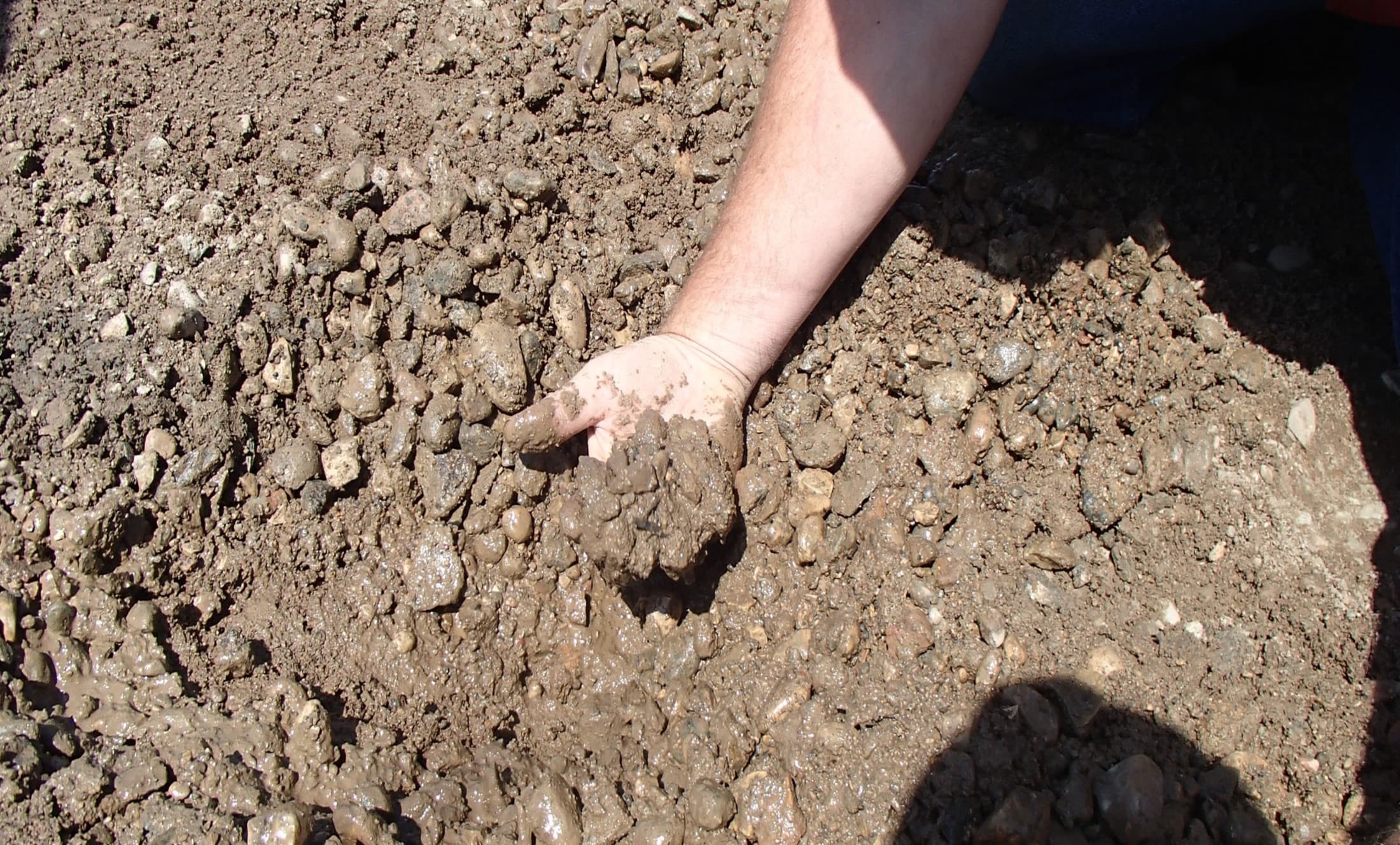Overview
The Canadian National Railway Company (CN) Rosetown Subdivision runs between Roskin Junction and Kindersley, Saskatchewan. Between 2009 and 2013, the section of track located at Mile 63.65 had to be lifted and realigned over 20 times because of track settlement caused by extremely soft subgrade conditions and inadequate sub-surface drainage. This part of the track is on a low embankment, about 5 ft (1.6 m) above the natural ground elevation.
Challenge
Initial attempts at remedial work included the installation of drains at three locations; however, there was no improvement, and the track continued to settle. Over this five-year period, there was evidence that the track foundation had failed and pumping of fines in the ballast was also evident. There was no separation between the ballast and the subgrade. Additionally, trains in this area had to operate on a permanent slow order to ensure no derailment occurred. The clay/silt foundation soil has a bearing capacity of 8.7 psi (60 kPa) and an undrained shear strength of 2 psi (15 kPa), corresponding to a CBR of less than 1%. The project's objective was to rebuild this section of track with a geosynthetic reinforcement to provide an overall maximum ballast and sub-ballast thickness of about 23 in (600mm).
In 1920, Arthur Newell Talbot (Professor of Municipal & Sanitary Engineering, University of Illinois), developed a methodology allowing designers to design rail track bed thicknesses based on the pressure developed at the base of a railway tie and the allowable stress at the sub-ballast/subgrade interface. By using this approach, CN design engineers determined that 47 in (120 cm) track beds were required, which was far more than what was practical to build on this site. This would have required extensive excavation of the foundation soil, which was not acceptable. This section would have consisted of 17 in (450 mm) ballast and 30 inches (750 mm) sub-ballast.
CN engineering personnel approached Solmax for assistance in developing a geosynthetic reinforced cross-section that would allow for a reduced sub-ballast thickness. By incorporating MIRAFI® RS580i, a high modulus woven polypropylene reinforcement geotextile into the Talbot Equation, the sub-ballast was reduced to 8 in (200 mm). The overall thickness of the ballast and sub-ballast with two layers of MIRAFI RS580i was 26 in (650mm). The first layer of MIRAFI RS580i was located at the subgrade/pit run interface, and the second layer in between the compacted pit run material and the sub-ballast. CN adopted the MIRAFI RS580i stabilization solution and proceeded to reconstruct this section of the Rosetown Subdivision.
Construction
In late July of 2013, the contractor removed the rail track and ties over the affected areas. Afterwards, the contractor installed the first layer of MIRAFI RS580i 15 ft (4.6 m) wide directly on top of the soft clay subgrade, followed by 15 – 23 in (400 mm- 600 mm) of pit run material. A second layer of MIRAFI RS580i was installed on top of the pit run material and 8 in (200 mm) of sub-ballast followed on top of the reinforcement geosynthetic. Finally, 18 in (450 mm) of ballast material was placed on top of the sub-ballast, at which point the contractor re-installed the rail ties and track.
Solution
By incorporating MIRAFI RS580i geosynthetics as part of the Rosetown rehabilitation, CN was able to successfully repair a track section. This operation was done without having to change the grade of the track or over excavate the entire work area. It also saved the cost and transportation of 22 in (550 mm) of sub-ballast stone. The slow train speed order was lifted along this section, allowing more efficient transportation along this line of track.
Using MIRAFI RSi-Series for ballast reinforcement improved structural and functional performance, increasing design life, and decreasing future maintenance. More than a decade after MIRAFI RS580i was installed to mitigate track settlement and provide track stabilization along the CN railway in Rosetown, the track continues to perform without additional maintenance.
